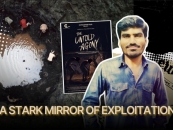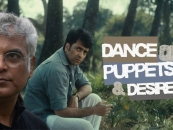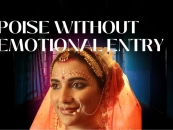He wasn’t exactly the critics’ darling but the masses loved him. Film historian, Dhruv Somani salutes the hit-maker Raj Kumar Kohli, who turned 90 this month.
One of my all-time favorite directors, Raj Kumar Kohli, just turned 90 on 14th September 2020. Tall and spry to this day, almost always dressed in a white safari suit, the producer-director belted out a series of crowd-pleasing entertainers - sourced frequently from mythology and supplemented with rich melodrama and action - right from the 1970s to the early 2000s.
A firm believer in multi-starrers, he started his innings with the modest fantasy flick Aik Tha Alibaba (1963), with Dara Singh and Nishi. Averagely successful, his next Sapni, was directed by his assistant Jugal Kishore.
A hearty Punjabi, he ventured towards his home turf with Main Jatti Punjab Di (1964), starring Premnath and Nishi - the success of which was followed by the film Pind De Kuri (1967), with Ravindra Kapoor and Nishi. In his capacity as a producer he also made Lootera (1965), directed by Harbans with Dara Singh and Nishi, and Danka (1969), with the same lead actors.
.jpg)
Buoyed by their success, he produced the suspense caper Shart (1969), top-lining Sanjay Khan, Mumtaz, Kumud Chuggani and Ramesh Deo. Director Kewal Mishra, was chosen again to helm Mujrim (1970), also in the same genre, featuring Joy Mukherjee, Kumud Chhugani and Dev Kumar; again a whodunit, which was well-received by the audience. Narendra Kumar was brought in to direct his brother Rajendra Kumar in Gora Aur Kala (1972), backed by Hema Malini, Rekha and Premnath.
According to Bollywood lore, Rajendra Kumar and his brother Narendra gave the producer such a rough time during the making of Gora Aur Kola, that Kohli decided to turn to direction for keeps. His personal life too was moving forward; he married his first heroine Nishi. Together they formed their own banner Shankar Films.
The banner kicked off with Kahani Hum Sab Ki, which dealt with the socially-relevant theme of the need for family planning.
Starring newcomer Arun Chopra opposite Mala Sinha, Om Prakash, Jagdeep, Vinod Mehra, Vimi and Aruna Irani - however, it was declared an outright flop. Incidentally, the Rajshri Banner for Tapasya retreaded the same subject, with Raakhee Gulzar and Parikshit Sahni, which proved to be a major hit.
It is believed that distributors now advised him to initiate a multi-starrer. Result: Nagin (1976), which narrated a revenge story of an Ichhadari Nagin on a group of friends who had accidentally killed her mate. At the outset, he had planned to cast six villains as the friends. But he changed his mind and instead cast big names such as Sunil Dutt, Feroz Khan, Sanjay Khan Anil Dhawan, Feroz Khan, Kabir Bedi, Vinod Mehra and Jeetendra.
.jpg)
Began a frantic search for a heroine to enact the title role. Rekha agreed to pair up with Sunil Dutt but turned down the main role. Asha Parekh was approached to play the Nagin too, but she rejected it since she is petrified of snakes. In fact, most heroines shied away the project as they saw the title part as a vamp-ish one.
Reena Roy was all for it though. She was credited for the film’s hit status and became a permanent-in-house actress for the banner. Raaj Kumar had declined the part subsequently played by Jeetendra. Vinod Khanna too had rejected the role, as he was uncomfortable with snakes. By the way Nagin was also the last film of Mumtaz before she quit the industry to get married.
Encouraged by the whopper hit Nagin, Raj Kumar Kohli soon announced his next star-crammed project Jaani Dushman (1979). Little did he know that he would have to grapple with daunting hazards? The male cast comprised Sanjeev Kumar, Sunil Dutt, Shatrughan Sinha, Jeetendra, Vinod Mehra, Vikram, Jagdeep and Premnath. And the female acting crew comprised Reena Roy, Rekha, Neetu Singh, Bindiya Goswami, Saarika, Neeta Mehta, Yogeeta Bali, Shobhini Singh, Aruna Irani and Jaishree T.
Handling the stars wasn’t the problem. But the subject revolved around a werewolf. Young women in red clothes would mysteriously disappear from their palanquins on reaching the village temple for blessings. When the censors disapproved, he took them to court. With the backing of his actors and distributors, he won the case after a battle of 11 months. And as it happened, Jaani Dushman smashed the box office collections of his previous hits.
.jpg)
The vinyl LPs of Jaani Dushman were released in a bright blue color, which became a collector’s item while the music by Laxmikant-Pyarelal topped the popularity charts and soon the film’s silver jubilee celebrations were held. A rage in the villages especially, the werewolf chiller has proved to be a perennial winner at its re-runs.
Fazed by his face-off with the censors perhaps, Raj Kumar Kohli dispensed with the horror elements for the straight-on revenge saga Badle Ki Aag (1982), pairing Sunil Dutt and Dharmendra for the first time - Sunil Dutt had signed Dharmendra for his pet project Messiah but it was shelved. Besides the two action heroes, Badle ki Aag starred Jeetendra, Reena Roy, Smita Patil, Sarika, Rajeev Anand, Nirupa Roy and Kadar Khan. Again Laxmikant-Pyarelal’s music score contributed considerably to its box office appeal.
Within trade circles, Raj Kumar Kohli began to be known as a director who could handle a dozen actors at a time - despite their date hassles and ego clashes - with élan.
Not surprisingly, he began to get offers from other production houses to direct multi-starrers. Hence, he took over Anil Suri’s film Raj Tilak, starring Raaj Kumar, Sunil Dutt, Dharmendra, Kamal Hassan, Hema Malini, Ranjeeta, Reena Roy, Sarika, Yogeeta Bali and Pran. The outcome performed reasonably well at the ticket windows. Followed by Inteqam (1988), for producers Sunil Darshan and Saazish (1988), for Suresh Malhotra. Meanwhile for his own banner, he piloted Nauker Biwi Ka (1983), with Dharmendra, Reena Roy, Anita Raj and Raj Babbar. Dharmendra notched up a solo hit after a long hiatus. Bappi Lahiri’s music also caught the public’s fancy.
Next came the actioner Jeene Nahin Doonga (1984), featuring Dharmendra, Raj Babbar, Anita Raaj, Roshni and Shatrughan Sinha, a remake of the Punjabi film Maula Jatt. Three years later, he crafted Insaniyat Ke Dushman (1987), with Dharmendra, Shatrughan Sinha, Dimple Kapadia, Raj Babbar, Anita Raj, Sumeet Saigal, Smita Patil, Shakti Kapoor and Amjad Khan. Here again he had to struggle with the censors over a graphic rape scene, which was finally passed with cuts.
.jpg)
During the 1980s and early ’90s, his lucky streak continued with Bees Saal Baad (1988), a supernatural subject, with Mithun Chakraborty, Dimple Kapadia, Meenakshi Seshadri, Shakti Kapoor, Amjad Khan and Anupam Kher. For a change of scene, he came up with the love triangle Pati Patni aur Tawaif (1990), starring Mithun Chakraborty, Farah Naaz, Salma Agha and Sumeet Saigal. An adaptation of Pakistan’s Bazaar-e-Husn (which had starred Salma Agha), witnessed long queues at the cinema halls. Musical scores by Laxmikant-Pyarelal enhanced both these films.
Two years later, he launched his son Armaan Kohli, with the actioner Virodhi, which tanked. Ditto Aulad ke Dushman (1993), yet another attempt - but in vain; to boost his sons’ career. Not the sort to give up, he announced Qahar (1997), starring Armaan Kohli bulwarked by Sunny Deol, Sunil Shetty, Sonali Bendre and Dipti Bhatnagar.
He made a comeback with Jaani Dushman – Ek Anokhi Kahani (2002), a multi-starrer in which Armaan Kohli played a shape-changing spirit, courtesy special effects. The heavy-duty ensemble cast included Sunny Deol, Akshay Kumar, Sunil Shetty, Manisha Koirala, Aftab Shivdasani, Aditya Pancholi, Sharad Kapoor, Rajat Bedi, Rambha, Raj Babbar and singer-turned-actor Sonu Nigam. Jaani Dushman, a rehash of Nagin and Jaani Dushman, was mercilessly criticized and didn’t appeal to the masses either.
Soon after this disappointment, he quit filmmaking and was suffering from health issues. On a personal note, I may say I felt privileged to meet him for a long chat once. He wrote an incisive foreword for my book, A Touch of Evil, and his eyes turned misty on seeing that his films had been discussed at length – a valuable moment for me, indeed!

-853X543.jpg)




-173X130.jpg)

-173X130.jpg)


-173X130.jpg)

-173X130.jpg)